Department of Health and Hygiene
Foreword
Types of work
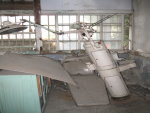
(Dental Room in the Old Chaiyi Prison)
(picture source:photo by this team)
- Health examinations:
The current system of prison administration has compulsory health examinations upon entrance of new convicts, so that everyone's health conditions can be accounted for; and they also have another checkup every three months thereafter. When the Old Prison was still functional, only sick people could receive check-ups.
- Death notifications:
- Training in nursing:
- Prevention of contagious diseases:
Under Japanese rule, vaccinations at the Old Prison were not as prevalent and varied, so there was a quarantine policy. Now, health was promoted through prevention by vaccinations and regular health checkups. There is also information about health given to inmates so they can have correct ideas.
- Environmental hygiene:
Policy was inclined to allow inmates to maintain their own cleanliness.
- In-patient management:
Bail out for medical treatment:
-
Medical equipment:
-
Pharmacy:
When prisoners die inside the prison, and the family members claim the bodies for burial, the prison offers assistance. If the inmate has no relatives, then the Department of Social Welfare would intervene and find mortuary companies to bury them in public cemeteries. The Department of General Affairs and the Department of Health and Hygiene would also provide assistance; this was true under Japanese rule as well.
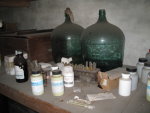
(Pharmacy in the Old Chaiyi Prison)
(picture source:photo by this team)
Such as CPR training, so that inmates can provide emergency care for each other.
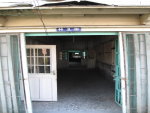
(Ward)
(picture source:photo by this team)
Now the New Chiayi Prison is contracted with Puzi Hospital and Veterans' Hospital, so if doctors find it necessary for an inmate to enter a hospital for treatment, it was possible for him to have hospital stays. After inmates leave prison, if they are still weak or disabled, they can first stay at the sick bay, the period of which is counted as part of their sentence. The Old Prison had no contracts with any medical institutions.
If there are life-endangering situations for which doctors in the prison cannot provide long-term care for, inmates can be bailed out for medical treatment. They are to report to the prison each month regularly, and the Department of Health and Hygiene would send people to check on them every two weeks. While inmates are out, the time does not count as part of their sentence, and they must complete their sentences after they are cured. The Old Prison also had this system.
At the Old Prison, there were only dentists' chairs; now there is even equipment for blood examinations.
This is staffed by professional pharmacists.
Anecdote
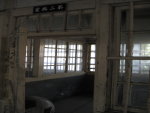
(Inside the ward)
(picture source:photo by this team)
During Japanese rule, since living conditions were poor and vaccinations were not widely used, there was a very high mortality rate. Often, after people died they would just be tossed into mass graves. Now, in the age with concern for human rights, we hear from Chiu Ju-hui, who was once a prison instructor, that for the whole time she worked at the Chiayi Prison, only one inmate died. That inmate had hallucinations, and would say that his stomachaches were because there were Martians in his stomach, and so on. On a silent night, he was in great pain, but people only thought he was just yelling because of his hallucinations, and they ignored him. The next day, he was finally taken to the hospital but it was too late and he had died.
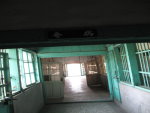
(Ward)
(picture source:photo by this team)
Because the Japanese greatly emphasized environmental hygiene, and the first medical officer was a Japanese man. At the time, the money made by prisoners inside the prison were directly taken by Japan; if prisoners get sick then there would be less income. Furthermore, the prisoners were closely congregated, and if one person got sick, then the disease would quickly spread throughout the entire prison; this would become a huge problem. So even when Chiayi had no doctors, the Old Prison had doctors (interview with Chiu Ju-hui).
Source:
-
Interviews with Mr. Chiu and Mr. Tsao
-
Chiayi Prison website
